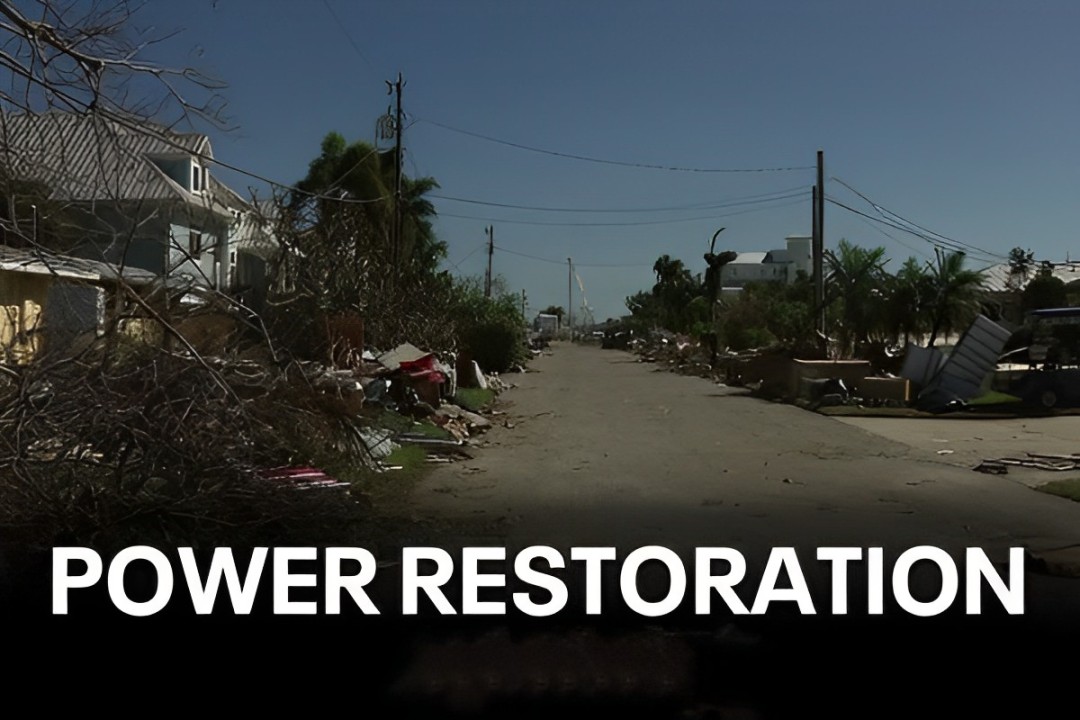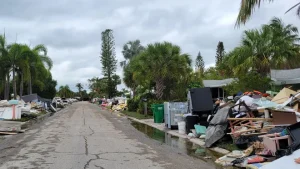Desafíos de la restauración del suministro eléctrico en EE. UU.. Después del huracán Milton


Power Restoration After Hurricane Milton
Hurricane Milton struck the U.S. on October 9, 2024, causing widespread devastation across Florida, leaving millions without power. The Category 3 hurricane unleashed heavy rainfall, tornadoes, and severe flooding, severely impacting the state’s electric grid. As of October 13, más que 517,000 homes and businesses are still without electricity, particularly in west-central Florida. The storm’s aftermath requires significant efforts to restore power, repair damaged infrastructure, and prevent further hazards.
This article examines the power restoration process following Hurricane Milton, focusing on the challenges faced by utility companies, emergency response teams, and the strategies employed to bring electricity back to affected communities.


Hurricane Milton’s Impact on Florida’s Electric Grid
The power infrastructure in Florida was severely compromised by Hurricane Milton. High winds and flooding downed power lines, damaged substations, and even toppled transmission towers in some areas. Over 3 million people lost power during the peak of the storm. Critical infrastructure, including hospitals, water treatment plants, and emergency services, faced urgent electrical needs, and utility companies had to prioritize restoring power to these vital sectors.
Challenges in Power Restoration
Restoring power after a major hurricane like Milton involves several challenges, some of which include:
Widespread Damage: Hurricanes typically damage power lines, transformers, and substations. In Milton’s case, multiple substations were flooded or damaged, causing an extended blackout period. Repairing these facilities requires not just time but also trained personnel who must work under dangerous conditions.
Accessibility Issues: Roads flooded or blocked by debris made it difficult for repair teams to access damaged infrastructure. Many utility crews had to wait for floodwaters to recede before beginning restoration, while others relied on helicopters to assess damage in hard-to-reach areas.
Risk of Further Hazards: Fallen power lines can pose serious safety risks, especially in flooded areas. Utility crews must ensure that areas are safe before working, which can slow down the recovery process. Además, electrical infrastructure that has been submerged in water may need to be replaced entirely to prevent future failures or electrical fires.
Coordination with Emergency Services: Power restoration efforts must be coordinated with first responders, as some areas may still be under evacuation orders or experiencing ongoing search-and-rescue operations. Ensuring that critical infrastructure—such as hospitals, emergency shelters, and water treatment plants—has power is a priority, even if it means delaying residential restoration.
Strategies for Power Restoration
Despite the significant challenges, Florida’s power companies and emergency management agencies implemented a series of strategic measures to restore power quickly and efficiently after Hurricane Milton:
Pre-Storm Preparation: Florida’s electric utilities have learned valuable lessons from previous hurricanes. In the days leading up to Hurricane Milton, utility companies positioned crews and resources throughout the state. Staging equipment and repair crews in strategic locations allowed for a faster response once the storm passed.
Mutual Assistance Programs: Utility companies from neighboring states and even from across the U.S. sent personnel and resources to help with the recovery. These mutual assistance programs are essential in major disasters when local utility companies are overwhelmed by the sheer scale of the damage. In the case of Milton, over 30,000 workers from other states came to assist Florida’s recovery efforts.
Temporary Solutions: In some areas where long-term repairs were required, utility companies implemented temporary fixes to restore power while permanent repairs were planned. Por ejemplo, portable generators were used in key locations, such as hospitals and emergency shelters, ensuring that essential services remained operational during the recovery period.
Grid Modernization and Resilience: As Florida recovers from Hurricane Milton, discussions about grid modernization and resilience have resurfaced. Investments in burying power lines, upgrading transformers to withstand higher storm surges, and incorporating smart grid technologies are seen as essential to reducing power outages in future storms. Utilities are also considering more renewable energy sources, such as solar farms, which can provide backup power in disaster scenarios.
Community and Government Support
President Joe Biden visited the affected regions on October 13, pledging federal support for recovery efforts. The Federal Emergency Management Agency (FEMA) has been actively involved in coordinating disaster response, and emergency funds have been released to aid in the repair of damaged electrical infrastructure.
Local communities have shown resilience in the face of adversity. Many residents have set up community-based support networks to share resources, such as food, water, and temporary power supplies. Utility companies have provided regular updates to customers about the status of the restoration efforts, and emergency services have been working tirelessly to ensure that those most in need receive priority.
The Long Road Ahead
While significant progress has been made in restoring power to parts of Florida, it will take weeks, if not months, for the state to fully recover from Hurricane Milton. As of October 13, más que 500,000 households are still without power, and some regions may face further delays due to ongoing flooding and infrastructure damage. Por ejemplo, low-lying areas near rivers and lakes are expected to experience additional flooding in the coming days, which could disrupt power restoration efforts.
In the aftermath of Hurricane Milton, it’s clear that improving the resilience of Florida’s power grid will be a top priority in the coming years. Utility companies, government agencies, and community organizations must work together to ensure that future storms cause less disruption to the state’s electric grid.
Conclusión
Hurricane Milton has once again highlighted the vulnerability of Florida’s power infrastructure to extreme weather events. While the immediate focus is on restoring power and rebuilding the grid, long-term solutions must be developed to ensure that Florida’s electric system is more resilient in the face of future hurricanes. Through coordinated efforts between utility companies, government agencies, and local communities, Florida will recover from Hurricane Milton, but the lessons learned must be applied to prevent similar disruptions in the future.
By focusing on grid modernization, enhanced pre-storm preparation, and mutual assistance programs, Florida can better weather future storms and ensure that power outages are less severe and shorter in duration.
Recent Posts
Tormentas e inundaciones! Cómo los cables impermeables protegen la energía?
Introduction In recent years, heavy rainfall and flooding have become increasingly frequent worldwide, causing severe…
El papel y los desafíos de la industria del cable en la economía circular
Introduction As sustainability becomes a global priority, industries across the spectrum are reevaluating their operations…
¿Cómo puede la industria del cable afrontar el desafío de la cadena de suministro global??
The global supply chain is an intricate and essential network that connects manufacturers, distributors, retailers,…
El impacto de las energías renovables en la demanda de cable
Introduction The global shift toward renewable energy has become a cornerstone of efforts to combat…
Pronóstico de la tendencia del mercado mundial de cables 2025
The global cable market is integral to a wide array of industries, including energy, telecommunications,…
IA y cadena de bloques: Revolucionando la fabricación y gestión de cables
The cable manufacturing industry, a cornerstone of global infrastructure, is undergoing a transformative shift. los…

